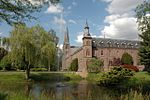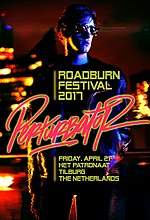Safaripark Beekse Bergen is the largest wildlife zoo of the Benelux region and provides a home to approximately 1,250 animals from over 150 species, varying from small mammals to large birds. It is located between the cities of Tilburg and Hilvarenbeek in the south of the Netherlands. The visitors can for instance watch zebras and giraffes on the spacious savannahs. Safaripark Beekse Bergen offers the possibility to explore the park on numerous safaris: walksafari, carsafari, bussafari and boatsafari.
The park is owned by the company Libéma Exploitatie BV, which is one of the largest leisure-related companies in the Netherlands.
What makes the park so special is that visitors can explore the park with their own car, without a fence in between the visitor and the animals. While driving through the park people can for instance encounter leopards and zebras or get their car 'washed' by a giraffe. In this way the visitor can imagine that they are really taking a safari in Africa. Visitors can also choose to follow the same route per bus. In this way they will get to know more information about the animals, since they will be joined by a Ranger.
Besides these two ways of exploring the park, the visitor can also choose to take a boat, that plies between two piers in the park. The visitors can also watch the animals by foot on the approximately 5 kilometres of roads throughout the park.
All of the above-mentioned safari possibilities can be combined. All the safaris start at the front of the park and come together at a parking side at the backside of the park, close to the Kongorestaurant.
Another feature of the park for which it is very well known is its bird show. In this show full of humour and interesting facts all sorts of birds are shown to the audience.
All animals receive a strict diet, as a result of which feeding the animals is prohibited.










